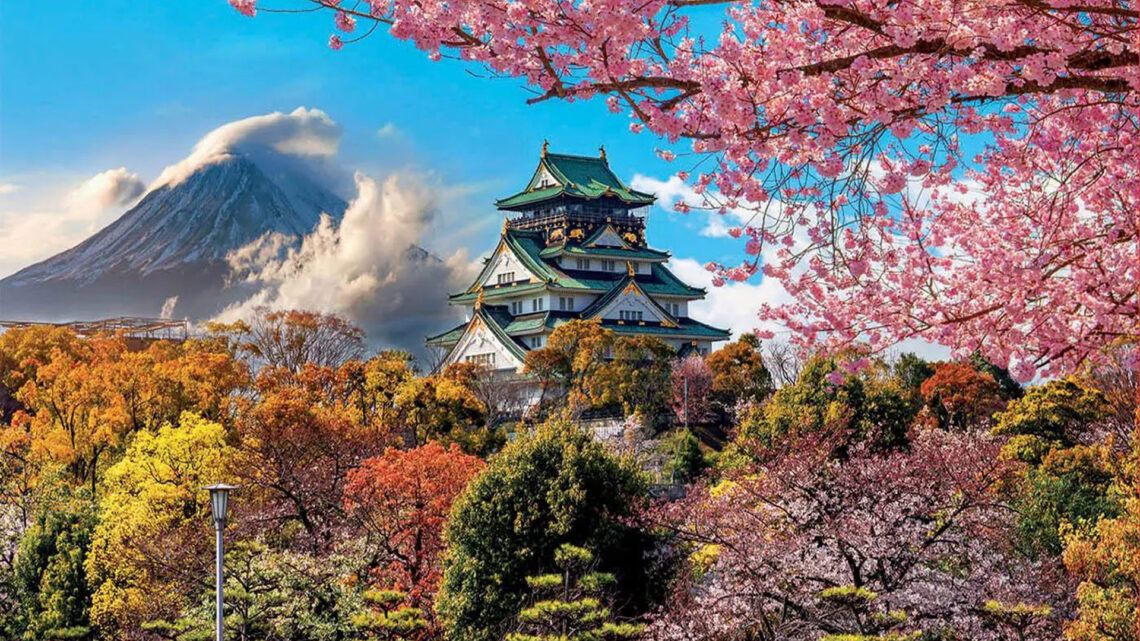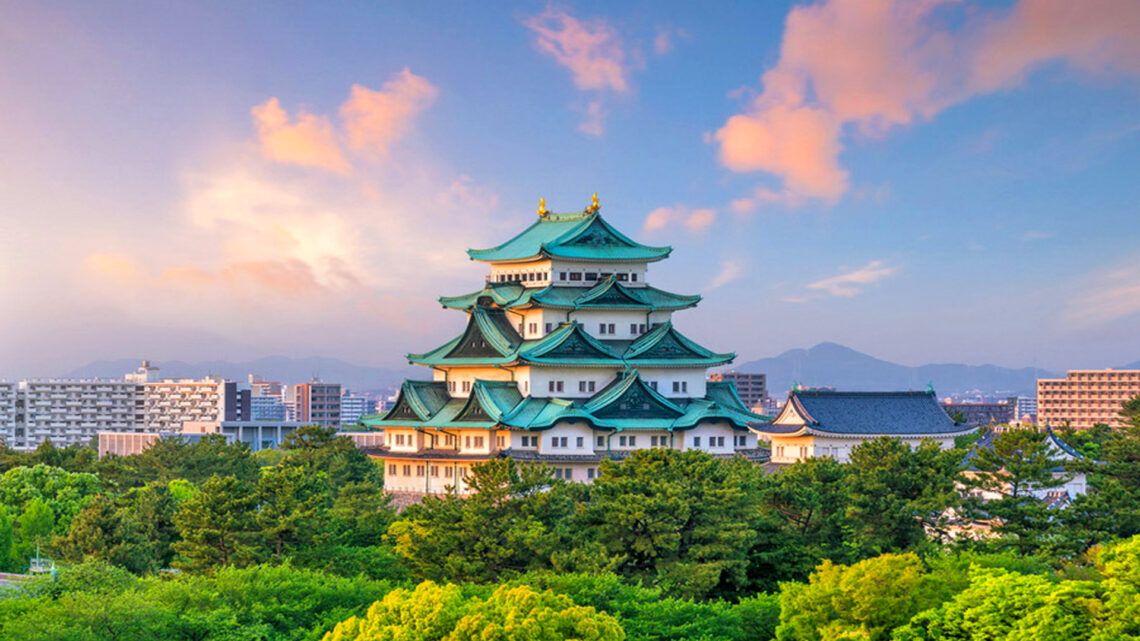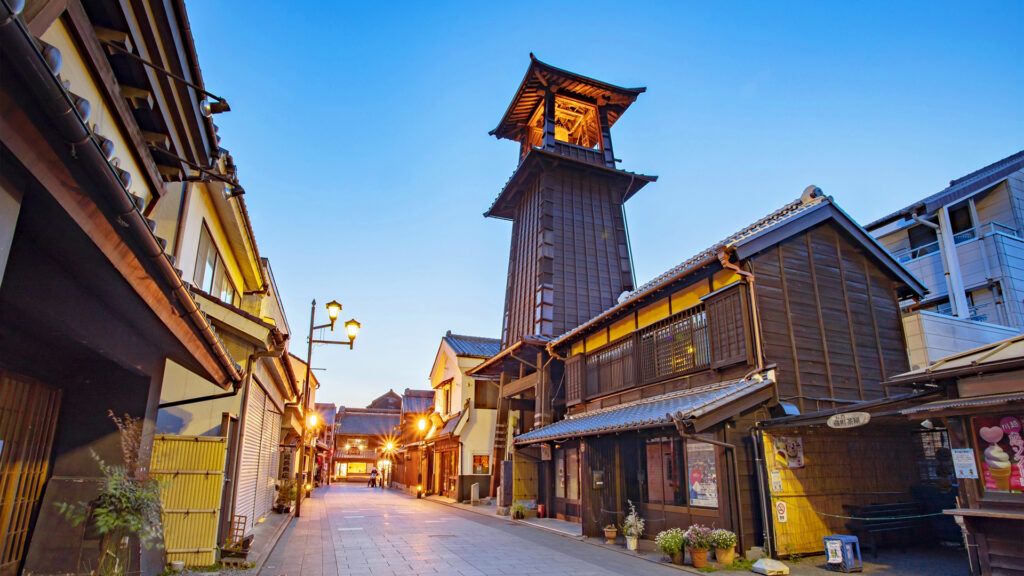
Kawagoe, also known as “Little Edo,” is a charming city in Saitama Prefecture, located just a short train ride from Tokyo. It is famous for its well-preserved Edo-era streetscape, which transports visitors back to Japan’s past. With its unique blend of traditional architecture, cultural heritage, and modern convenience, Kawagoe offers a fascinating experience that appeals to both history enthusiasts and lovers of Japanese culture.
Kawagoe has a long and rich history that dates back to the Heian period (794-1185). The city flourished particularly during the Edo period (1603-1868) when it served as an important trading and storage hub for the capital of Edo (modern-day Tokyo). Due to its strategic location and prosperity, Kawagoe earned the nickname “Little Edo,” as it reflected the culture and lifestyle of the then-capital.
During the Edo period, Kawagoe was governed by the Matsudaira family, a branch of the powerful Tokugawa family that ruled Japan. The Matsudaira family promoted trade and the development of the city, leading to a boom in both the economy and culture. Today, many of the old warehouses and merchant houses are still preserved and form the centerpiece of the city’s tourist attractions.
Kurazukuri Street is perhaps the most iconic symbol of Kawagoe and a must-see for every visitor. This street is lined with historic warehouses in the Kurazukuri style, typical of the Edo period. The massive black plaster buildings were originally built to protect the merchants’ valuable possessions from fire. Today, many of these warehouses house museums, souvenir shops, cafes, and traditional restaurants, preserving the charm of the Edo period.
Walking down Kurazukuri Street immediately transports one to another era. The architecture, narrow alleys, and atmosphere strongly evoke the heyday of Kawagoe when the city was a significant trading center. Many visitors appreciate the opportunity to experience authentic Japanese culture and history here without the hustle and bustle of Tokyo.
Another iconic landmark of Kawagoe is the “Toki no Kane,” the Time Bell Tower, originally built in the 17th century. The bell tower was an important symbol of the city and served to announce the time to the citizens of Kawagoe. Although the original tower was destroyed by fire, it was rebuilt in its current form in the late 19th century and is still in operation today.
The bell tower rings four times a day and attracts many visitors who admire its impressive structure and historical significance. The sounds of the bell echoing through the streets add to the nostalgic atmosphere of Kawagoe and remind visitors of the city’s rich history.
The Kawagoe Hikawa Shrine is another significant cultural site in Kawagoe. The shrine, which is over 1,500 years old, is the guardian shrine of the city and a popular destination for locals and tourists alike. It is especially known for its beautifully carved wooden structures and the serene atmosphere, making it an ideal place for spiritual retreat.
Unique to this shrine is the tradition of “Ema,” small wooden prayer plaques on which visitors can write their wishes. These plaques are hung at the shrine in the hope that the deities will grant the prayers. The shrine is also famous for its “Nagareboshi no Ishizue,” a stone altar where couples can wish for eternal love.
For those with a sweet tooth, Kashiya Yokocho, or the “Candy Alley,” is an absolute highlight. This narrow alley is lined with traditional shops selling a variety of Japanese sweets. From handmade rice cakes and Dango (rice dumplings) to Taiyaki (fish-shaped cakes filled with sweet bean paste) – here, you can find everything your heart desires.
The atmosphere in Kashiya Yokocho is lively and cheerful, and the scent of freshly baked sweets fills the air. The alley offers not only culinary delights but also a glimpse into Japanese food culture and traditions that have been passed down for centuries. Many visitors enjoy strolling through the alley, sampling different treats, and soaking in the vibrant atmosphere.
The Kawagoe Festival, held every October, is one of the largest and most famous festivals in the region. It dates back to the 17th century and was originally celebrated in honor of the deities of the Hikawa Shrine. Today, the festival is a colorful spectacle that attracts visitors from all over Japan and the world.
The highlight of the Kawagoe Festival is the magnificent floats, called “Dashi,” which are pulled through the streets of the city. These floats are intricately decorated with lanterns, carvings, and traditional ornaments and are accompanied by music and dance groups. The streets of Kawagoe are filled with joyous crowds during the festival, enjoying the colorful parades, traditional dances, and vibrant atmosphere.
Kita-in Temple – A Temple with History
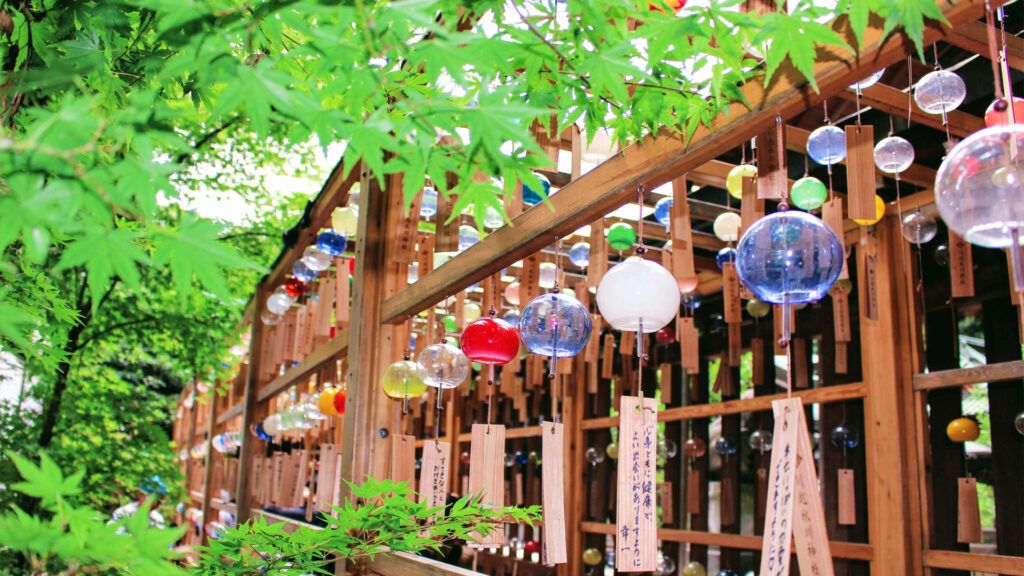
The Kita-in Temple is another historical gem in Kawagoe, known for its connection to the Tokugawa family. The temple was founded in the early 9th century and plays an important role in the region’s history. It houses a collection of Buddha statues and artifacts that allow visitors to immerse themselves in Japan’s religious history.
A special attraction of the Kita-in Temple is the “500 Rakan Statues,” a collection of over 500 stone figures representing the disciples of Buddha. Each statue is unique and depicts different facial expressions and poses, offering visitors an interesting and moving experience. The temple is also known for its gardens, which are particularly stunning in the spring and autumn.
One of the most fascinating features of Kawagoe is its Edo-style architecture, which makes the city a living open-air museum. The well-preserved buildings and streets provide a rare insight into life during the Edo period and offer a picturesque backdrop for walks and photos. Many of the historical sites in Kawagoe have been carefully restored and preserved to provide visitors with an authentic experience.
In addition to Kurazukuri Street and the Toki no Kane, there are many other noteworthy historical sites in Kawagoe, such as the Matsumoto House, a traditional merchant house that is now a museum. This house showcases the life of a wealthy merchant family during the Edo period and provides insights into the architecture, furnishings, and daily life of that time.
While Kawagoe is rich in history and traditions, the city also offers a variety of modern amenities and shopping opportunities. Along the main streets and in the shopping districts, visitors will find a mix of modern shops, boutiques, cafes, and restaurants offering both traditional Japanese and international cuisine.
Particularly noteworthy is the Kawagoe Market, which is held regularly and sells a wide range of products, from fresh produce and local specialties to handmade crafts and souvenirs. Here, visitors can sample local delicacies, buy unique gifts, and immerse themselves in local life.
Culinary Highlights in Kawagoe
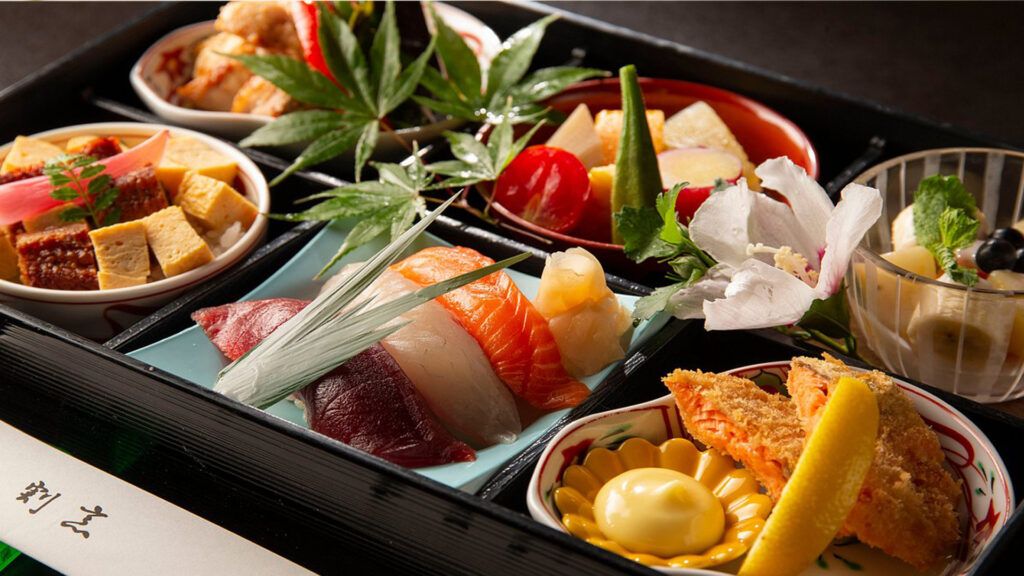
The cuisine of Kawagoe is diverse, offering numerous local specialties that are a must-try. One of the most well-known delicacies is Kashiwamochi, a rice cake filled with sweet red bean paste and wrapped in an oak leaf. This traditional Japanese dessert is especially popular during the spring festival.
Another specialty of Kawagoe is Unagi (eel). The city is famous for its high-quality eel dishes, which are served in many traditional restaurants. The eels are grilled over charcoal and glazed with a special soy sauce that gives them a unique, slightly sweet flavor. Unagi is considered a delicacy and is a wonderful way to enjoy the culinary traditions of the city.
Kawagoe is also famous for its Imo (sweet potatoes), which are available in numerous variations. From simple baked sweet potatoes to sweet potato chips and even sweet potato ice cream—the variety of sweet potato dishes in Kawagoe is impressive. The sweet potato Dango, small balls made from sweet potato flour, served on a skewer and coated with a sweet soy sauce, are a must-try for every visitor.
A City of Cultural and Educational Significance

Kawagoe is not only a tourist destination but also an important educational center that keeps history and culture alive. Many school groups from all over Japan visit Kawagoe to learn more about the Edo period and traditional Japanese life. The well-preserved buildings and museums in the city provide an excellent opportunity to experience and understand life in a Japanese town hundreds of years ago.
Visiting Kawagoe offers a unique opportunity to experience Japan’s rich history and culture. Whether you admire the impressive architecture, indulge in culinary delights, or participate in traditional workshops, the city has something for everyone.
Kawagoe is a treasure trove of history, culture, and tradition that invites visitors to step back in time and discover the legacy of the Edo period. This charming city offers a perfect blend of past and present, making it a unique travel destination near Tokyo. Whether for a day trip or a longer stay, Kawagoe is a place that provides unforgettable experiences and deep insights into historical Japan.
Accommodations and Travel to Kawagoe
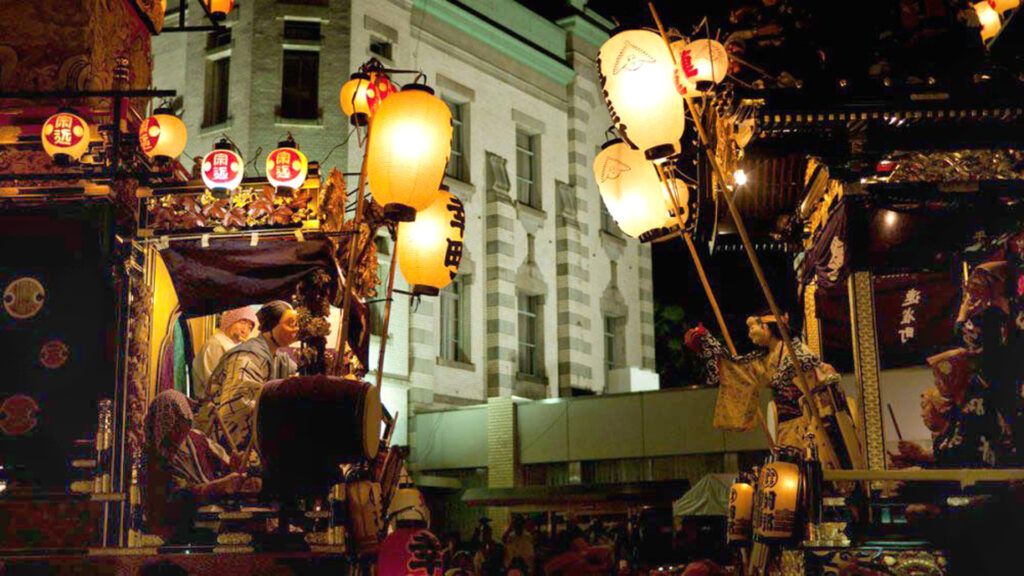
Kawagoe is easy to reach from Tokyo, making it a perfect destination for a day trip. The city is connected by several train lines, including the Tobu-Tojo Line, the Seibu-Shinjuku Line, and the JR Kawagoe Line. The trip from Tokyo to Kawagoe typically takes less than an hour, making the city a convenient and accessible option for travelers looking to escape the hustle and bustle of the metropolis.
The city offers visitors numerous opportunities to immerse themselves in traditional Japanese culture. One particularly popular activity is wearing kimonos or yukatas, which are available for rent at many shops in the city. Strolling through the streets of Kawagoe in traditional attire enhances the feeling of being transported to another era and provides fantastic photo opportunities.
Additionally, visitors to Kawagoe can participate in various traditional crafts and cooking workshops. These include learning how to make Japanese sweets or engage in Edo-period craft techniques. These experiences offer not only a fun and educational activity but also the chance to experience authentic Japanese culture up close.
There are a variety of accommodations in the city to suit the needs and preferences of different travelers. Although the city is smaller than some of Japan’s major metropolises, there are still a range of hotels, ryokan (traditional Japanese inns), hostels, and guesthouses that provide a comfortable base for exploring the city and its surroundings.
Hotels
For travelers who prefer modern amenities, there are several hotels in Kawagoe that promise a pleasant stay. These hotels range from simple budget options to more luxurious accommodations with additional services such as restaurants, fitness centers, and spas.
- Kawagoe Prince Hotel:** The Kawagoe Prince Hotel is one of the best-known hotels in the city. It offers comfortable rooms and a central location, just a few minutes’ walk from Kawagoe Station. The hotel features several restaurants offering a variety of dishes, from traditional Japanese cuisine to international fare.
- Super Hotel Saitama Kawagoe:** For travelers seeking a more affordable option, the Super Hotel Saitama Kawagoe offers a good mix of comfort and convenience. The hotel is also close to the station, providing easy access to the city’s main attractions. The rooms are compact but well-equipped, and the hotel offers a complimentary breakfast buffet.
Ryokan
Staying at a ryokan is an excellent way to experience traditional Japanese hospitality and culture. These inns often feature tatami-mat rooms, futons for sleeping, and traditional Japanese baths.
- Wakatake Ryokan:** This charming ryokan offers an authentic Japanese lodging experience. The rooms are designed in a traditional style and offer a soothing view of the garden. Guests can enjoy a Japanese breakfast and relax in the communal baths.
- Matsumura Ryokan:** Another traditional inn, the Matsumura Ryokan, provides a warm and welcoming atmosphere. The rooms are simple but comfortable, offering a chance to immerse oneself in a peaceful, Japanese environment. The ryokan is close to many attractions, making it an ideal choice for travelers looking to explore Kawagoe.
Hostels and Guesthouses
For those who prefer budget-friendly accommodations or enjoy meeting other travelers, hostels and guesthouses are a great option. These accommodations often offer dormitory-style or private rooms and a communal atmosphere that is ideal for travelers looking to connect with others.
- Kawagoe Guesthouse:** The Kawagoe Guesthouse offers both dormitory and private rooms and is an excellent choice for budget-conscious travelers. The guesthouse is located in a renovated traditional building and provides a cozy atmosphere. The common areas are inviting and offer the opportunity to meet other guests and exchange experiences.
- Niko Niko Hostel:** Another popular hostel in Kawagoe is the Niko Niko Hostel, known for its friendly atmosphere and convenient location. It offers a mix of dormitories and private rooms and has a communal kitchen and lounge where guests can come together and relax.
Getting to Kawagoe
Kawagoe is easy to reach thanks to its proximity to Tokyo and its good transportation connections. There are several ways to get to the city depending on where you start your journey.
By Train
Most visitors travel to Kawagoe by train, as this is the fastest and most convenient option. The city is easily accessible from several stations in Tokyo:
- Tobu-Tojo Line:** One of the most popular routes to Kawagoe is the Tobu-Tojo Line, which starts from Ikebukuro Station in Tokyo. The journey takes about 30 to 40 minutes by the limited express train, and there are also slower trains that stop at several stations. The Tobu-Tojo Line leads directly to Kawagoe Station, which is close to many major attractions.
- JR Kawagoe Line:** The JR Kawagoe Line is another convenient option for travelers going to Kawagoe from Tokyo. It departs from Shinjuku or Ikebukuro Station and provides a direct connection to Kawagoe Station. The journey takes about 60 to 70 minutes, depending on the type of train.
- Seibu-Shinjuku Line:** Travelers can also use the Seibu-Shinjuku Line, which departs from Seibu-Shinjuku Station in Tokyo. This line also offers a direct connection to Kawagoe and takes about 50 to 60 minutes.
By Bus
Although the train is the preferred choice, there are also bus services to Kawagoe that provide a practical alternative, especially for those who prefer a more direct or economical mode of transport. Several bus companies offer connections from various parts of Tokyo to Kawagoe. Travel time can vary depending on traffic conditions but generally takes about 90 minutes.
By Car
For travelers exploring Japan by car, Kawagoe is also easily accessible. The city is located near several major roads and highways, making it easy to drive to. There are numerous parking areas near major attractions, but it is advisable to check availability and parking fees in advance, as these can vary depending on location and season.
Getting Around Kawagoe

Once you arrive in Kawagoe, there are several ways to get around. The city is relatively compact, and many attractions are within walking distance of each other.
- On Foot: The downtown area of Kawagoe is easily explored on foot. Most of the historical sites, shopping areas, and restaurants are conveniently located, and walking through the city allows you to enjoy the atmosphere and small details of the historical buildings.
- Bicycle Rental: For visitors who want to see more of the city, bicycle rentals are available. Several shops near the station rent bicycles at affordable prices. Biking makes it easy to reach farther attractions and is a pleasant way to explore the city.
- Sightseeing Buses: There are also sightseeing buses that take visitors to Kawagoe’s main attractions. These buses are especially convenient for travelers with limited time or those looking to avoid the summer heat. The buses run regularly and stop at the city’s major attractions, allowing you to easily hop on and off to explore the area.
My conclusion
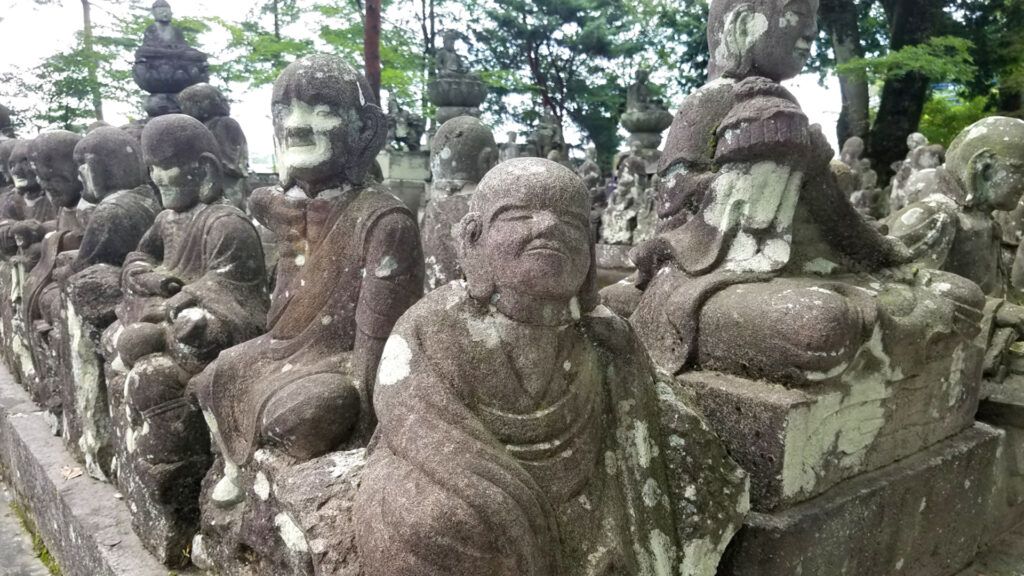
Kawagoe is a fantastic destination for anyone looking to experience traditional Japan due to its well-preserved historical sites, diverse accommodation options, and easy accessibility. Whether for a short day trip or a longer stay, the city offers numerous opportunities to experience Japan’s rich culture and history. Kawagoe, with its well-preserved Edo-period cityscape, offers a rare opportunity to immerse oneself in one of the highlights of Japanese history and culture. Often referred to as “Little Edo,” the city is a living example of the architecture, commerce, and daily life of the Edo period. Visitors can stroll through the historic streets, visit impressive sights such as the Toki no Kane bell tower and the Kawagoe Hikawa Shrine, and enjoy the local cuisine, which is rich in tradition and flavor.
Due to its proximity to Tokyo and the abundance of well-preserved historical sites, Kawagoe is an ideal destination for anyone looking to gain insight into old Japan. Whether exploring Candy Alley, participating in one of the traditional festivals, or simply soaking in the atmosphere of this charming town, Kawagoe offers unforgettable experiences and a deep insight into Japan’s rich culture and history.
Kawagoe remains an important cultural heritage site appreciated by both locals and tourists. The combination of history, culture, and modern convenience makes the city a unique place that attracts visitors from all over the world. A visit to Kawagoe is more than just a trip into the past—it is a journey into the heart of Japanese culture and history.
For travelers looking to experience Japan beyond the well-known metropolises, Kawagoe offers a wonderful alternative, rich in experiences and memories. Plan your visit and discover the beauty and charm of Kawagoe—a city that proudly honors its past and keeps it alive while offering today’s visitors a unique and authentic experience.


